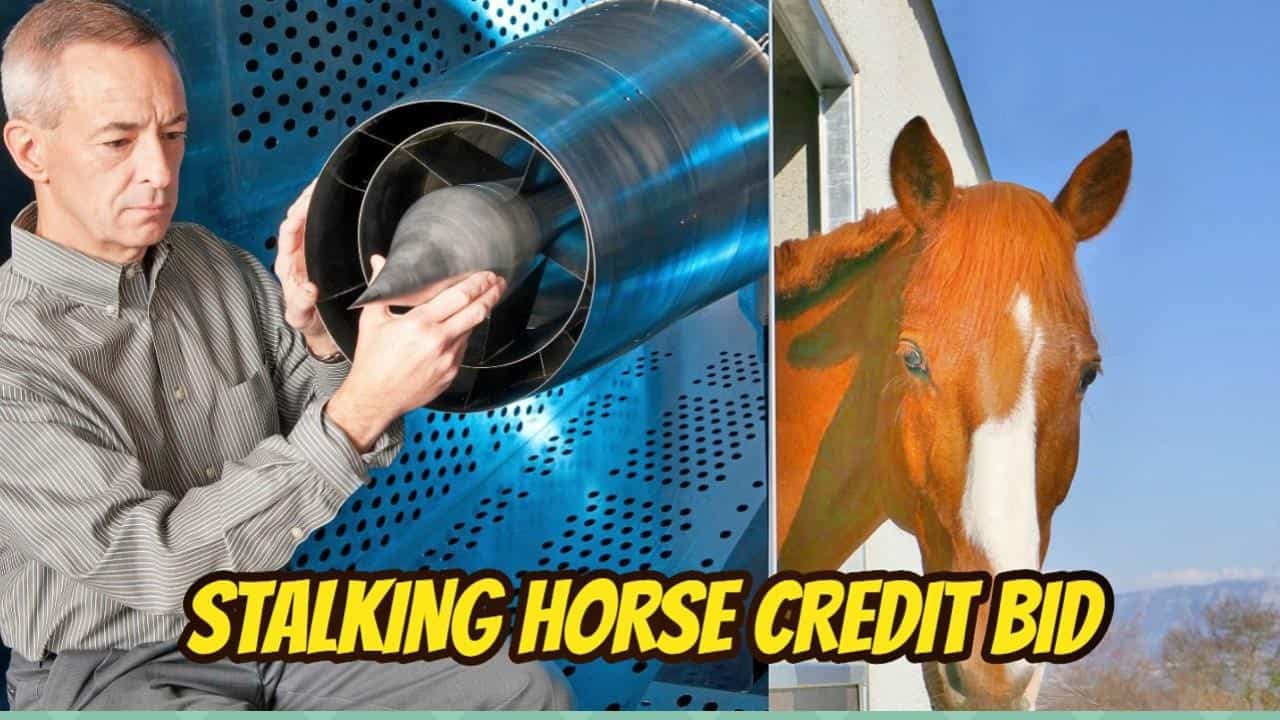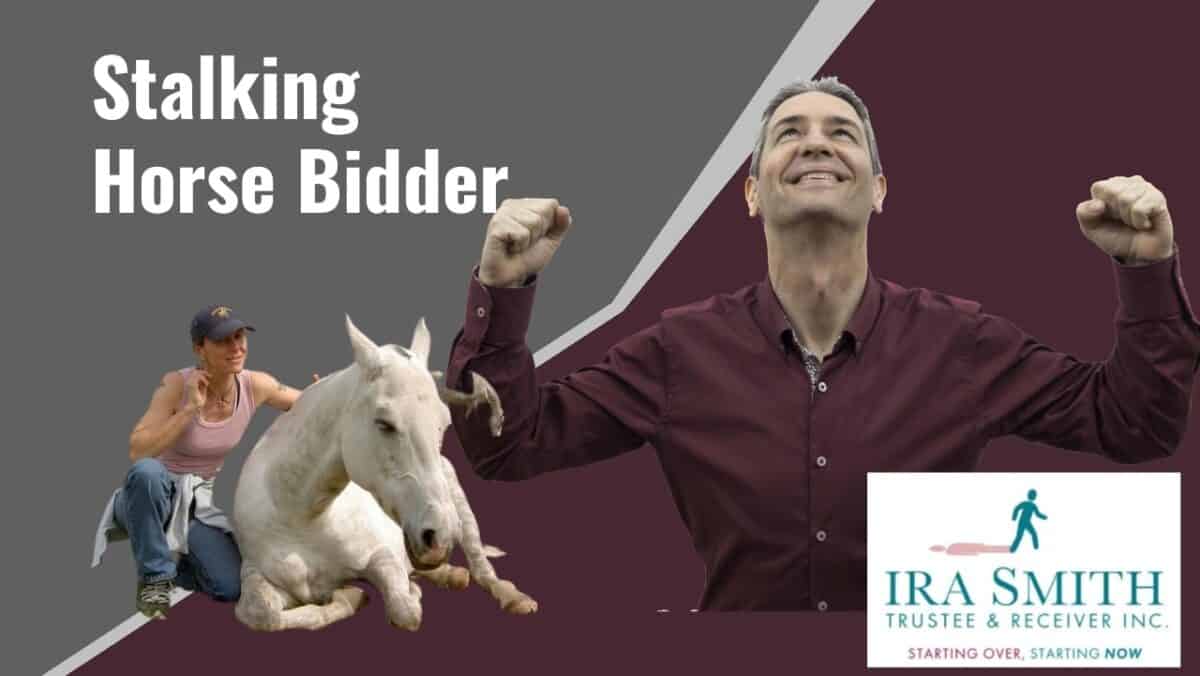
Stalking horse credit bid: Introduction
In last week’s vlog, “STALKING HORSE ASSET PURCHASE AGREEMENT: THE WEINSTEIN COMPANY GALLOPS INTO A COURT SUPERVISED SALES PROCESS“, I described what a stalking horse asset purchase agreement is. I also defined and described the proposed stalking horse credit bid process of The Weinstein Company. That process was approved last Friday by a Delaware bankruptcy judge. The Court delayed the court sales auction by a couple of business days to May 4, 2018.
Stalking horse credit bid: Our earlier case studies
Over the last few weeks, I have provided some case studies from our files for both personal and corporate insolvency matters. As a refresher, these case study vlogs are:
- CLAIM BANKRUPTCY IN ONTARIO CASE STUDY: SHE REALLY WANTED TO BUT WE STOPPED HER AND SOLVED HER PROBLEMS
- COURT APPOINTED ESTATE TRUSTEE CASE STUDY: IF IT WAS EASY YOU WOULDN’T NEED US
- COMPANY RESTRUCTURING PROCESS CASE STUDY: HOW WE USED BUSINESS RESTRUCTURING IN CANADA TO SAVE THE BUSINESS AND JOBS
Stalking horse credit bid: Our stalking horse sales process case study
This is the last vlog along our case study theme. The purpose is to show the decision making that the Court goes through in being asked to approve a stalking horse credit bid and a stalking horse sales process in a corporate insolvency file.
We were Court-appointed as Receiver and Manager of a club operating a golf course, restaurant and party function business. The first secured creditor filed its motion to appoint us. We were appointed very close to Christmas that year. Obviously, the golf course was not operating at the time of our appointment. The food and beverage facilities only had one remaining Christmas party and the annual club New Year’s party. No parties were booked yet into the New Year.
We did the normal things a Receiver does such as:
- taking physical possession of the premises and the books and records;
- identifying if there were any assets located off premises; and
- arranging for property and liability insurance.
We were able to use the time to understand the business and the nature and extent of the assets.
There was already a purchaser ready to give an offer to purchase the Receiver’s right, title and interest in the operating assets comprising the club’s businesses. We arranged for an appraisal of the assets and business. We received and reviewed the appraisal. The secured creditor told us the form of offer they would support.
Armed with the appraisal information and the secured creditor information, we entered into a conversation with the potential purchaser. The amount this purchaser told us it was willing to pay was far more than appraised value and above the minimum threshold for acceptance from the secured creditor.
Stalking horse credit bid: Our stalking horse offer
We decided that a stalking horse bid process would be ideal. We doubted that any party would bid higher than the value this potential purchaser was discussing. It made sense to also have the court supervised sales process completed prior to April, so that it would be the purchaser opening up and preparing the course for play and running the food and beverage business, rather than the Court appointed Receiver.
The potential purchaser agreed to become a stalking horse bidder and to the timeline. We and our legal counsel worked with the potential purchaser and its legal counsel to prepare a draft stalking horse asset purchase agreement. The purchase price was the amount this now stalking horse purchaser was always discussing.
Stalking horse credit bid: We galloped off to Court
We filed our motion for approval of our activities to date, requested permission to enter into the proposed stalking horse agreement and sought approval for our proposed stalking horse sales process. The Court had no problem with our activities to date, or the stalking horse agreement, but did not like our truncated stalking horse sales process. We were not able to be in Court until February and we wished to complete the sale by March 31. The Court felt that was not enough time to run a sales process that was fair to all potential bidders. Our legal counsel attempted to persuade the Judge that comparing the appraisal (which the Court saw but our purchaser did not see) and the value of the stalking horse offer, we did not feel that there would be any other bidders.
We could not persuade the Court. The Judge approved everything, but he amended the timeline so that we would run a process that would last at least 5 weeks from the time we ran our advertisement for this business opportunity.
The Court considers various factors when asked to approve a receivership or bankruptcy sales transaction. The basis for this comes from a 1991 Court of Appeal for Ontario decision in Royal Bank of Canada v. Soundair Corp., 1991 CanLII 2727 (ON CA). In no particular order, the Court is concerned with:
- Whether the Receiver has made enough effort to get the best price and has not acted improvidently.
- Considering the interests of all parties.
- The efficacy and integrity of the process used to get offers.
- If there has been unfairness in the working out of the process.
In the Judge’s opinion, a 5 week sales process would ease any concerns he had.

Stalking horse credit bid: The outcome
We amended our sales process in accordance with the Judge’s instructions. We then:
- ran the advertisement and issued our preliminary “teaser” sales document to all those that requested it; and
- set up our online data room of pertinent business and other information about the assets and business operations.
Anyone who wished to do due diligence signed our confidentiality agreement. Everyone who signed our confidentiality agreement was then provided with a unique password to enter the online data room.
The due diligence period ended and since everyone knows the amount of the stalking horse offer, no other potential bidders submitted an offer. Nobody wanted to bid more.
We went back to Court to tell of the results and obtained Court approval to complete the transaction of the stalking horse bidder whose asset purchase agreement was already approved by the Court.
In the meantime, spring had arrived. We hired the necessary golf course superintendent and other maintenance and operating staff and opened up the golf course. We ran the golf club until the sale was completed near the end of June that same year. In the eyes of the Court fairness was achieved, we operated the golf club and the secured creditor was happy with the result of the sale.
Stalking horse credit bid: Is your business facing financial problems?
This case study shows how we were able to satisfy all stakeholders in a Court supervised sales process, to transfer the assets to a new business, remit funds to the secured creditor on a basis acceptable to them and meet the requirements of the Court.
Is your business facing financial problems? Perhaps your company is in need of a restructuring. The Ira Smith Team can develop a restructuring plan which may or may not include the need to file for bankruptcy protection.
The Ira Smith Trustee & Receiver Inc. Team understands the pain you are going through trying to keep your company alive while trying to negotiate with potential purchasers. We understand that you are playing beat the clock, and the pain and stress you are feeling thinking that you may just run out of time. The bankruptcy protection process can ease this stress and provide a level playing field so that no potential purchaser takes advantage of you.
The Ira Smith Team has a great deal of experience in running a stalking horse stalking horse asset purchase agreement. The stress placed upon you due to your company’s financial challenges is enormous. We understand your pain points. Call the Ira Smith Team today for your free consultation. We can end your pain and put your company back on a healthy profitable path, Starting Over, Starting Now.



